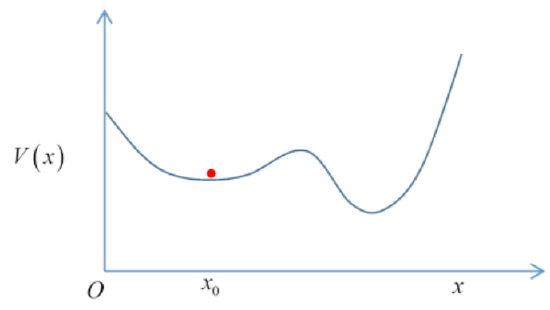17.1: Particle in a Well
( \newcommand{\kernel}{\mathrm{null}\,}\)
We begin with the one-dimensional case of a particle oscillating about a local minimum of the potential energy V(x). We’ll assume that near the minimum, call it x0 the potential is well described by the leading second-order term, V(x)=12V′′(x0)(x−x0)2 so we’re taking the zero of potential at x0, assuming that the second derivative V′′(x0)≠0, and (for now) neglecting higher order terms.

To simplify the equations, we’ll also move the x origin to x0, so
m¨x=−V′′(0)x=−kx
replacing the second derivative with the standard “spring constant” expression.
This equation has solution
x=Acos(ωt+δ), or x=Re(Beiωt),B=Aeiδ,ω=√k/m
(This can, of course, also be derived from the Lagrangian, easily shown to be L=12m˙x2−12mω2x2.


